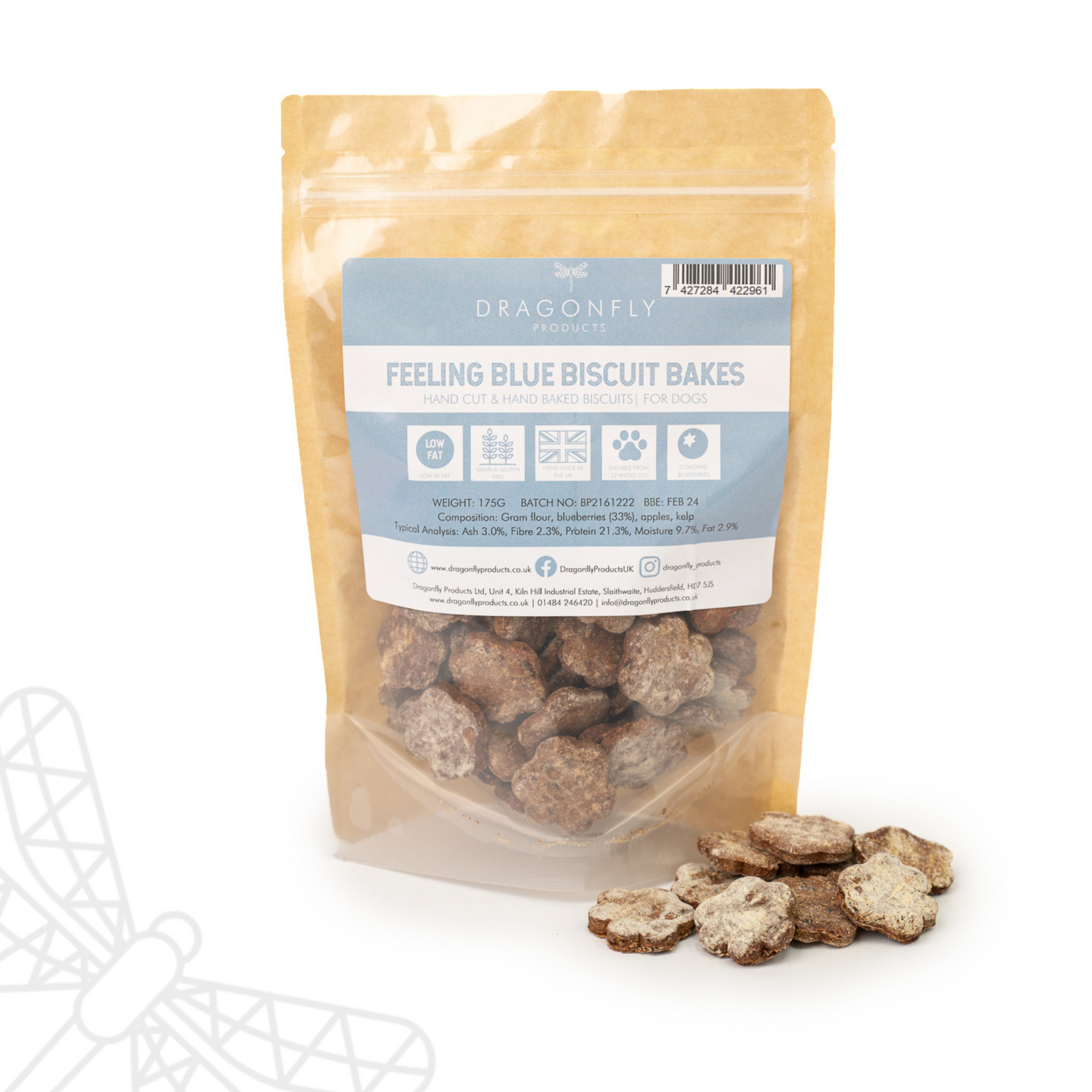
Can Dogs Eat Chocolate?
No, chocolate is dangerous and harmful to dogs. Chocolate is derived from cocoa beans, containing substances like theobromine and caffeine. Theobromine is a naturally occurring compound found in chocolate, primarily derived from cocoa beans. It belongs to a class of chemicals called xanthines, which are stimulants that affect the nervous system. While humans can metabolise theobromine relatively quickly, dogs metabolise it much more slowly, making them susceptible to its toxic effects.
Theobromine is harmful to dogs because their bodies process it more slowly, allowing it to build up to dangerous levels. Dogs lack the necessary enzymes to efficiently break down theobromine, leading to a prolonged presence in their bloodstream. The compound primarily affects the heart, central nervous system, and kidneys.
Theobromine toxicity varies based on factors like a dog's size, the type of chocolate consumed, and their individual sensitivity. Dark chocolate and cocoa contain higher theobromine levels, making them more toxic than milk chocolate.
Table of Contents
- What are the symptoms of a dog eating chocolate?
- What amount of chocolate is toxic to dogs?
- Can dogs eat chocolate chip cookies?
- What to do if your dog eats chocolate?
- What Are Alternative Safe Natural Treats for Dogs?
What are the symptoms of a dog eating chocolate?
Symptoms of chocolate ingestion in dogs can vary based on factors like the type of chocolate and the amount consumed and the individual dog's sensitivity.
- Vomiting: Chocolate consumption can irritate the stomach lining, leading to vomiting as a common initial reaction.
- Diarrhoea: Theobromine and other compounds in chocolate can lead to gastrointestinal distress, resulting in diarrhoea.
- Increased Heart Rate: Theobromine is a stimulant that can cause an elevated heart rate (tachycardia) in dogs, potentially leading to cardiac stress.
- Restlessness or Hyperactivity: The stimulant effect of theobromine can lead to restlessness, hyperactivity, and an inability to settle down.
- Tremors or Seizures: High theobromine levels can affect the nervous system, causing muscle tremors or, in severe cases, seizures.
- Panting: Increased breathing rate, or panting, can occur due to the stimulating effects of theobromine on the respiratory system.
- Excessive Thirst or Urination: Dogs may drink more water and urinate more frequently due to the diuretic effect of theobromine.
- Elevated Blood Pressure: The stimulant properties of theobromine can lead to a temporary increase in blood pressure.
- Elevated Body Temperature: Some dogs may experience an elevated body temperature due to the stimulant effects of theobromine on the thermoregulatory system.
- Muscle Rigidity: Theobromine toxicity can lead to muscle stiffness or rigidity, making movement uncomfortable for the dog.
- Rapid Breathing: Increased respiratory rate can result from the stimulating effects of theobromine on the respiratory centre in the brain.
- Abdominal Discomfort or Bloating: Gastrointestinal irritation caused by theobromine can lead to abdominal discomfort or bloating.
- Lethargy or Weakness: Following the initial stimulation, dogs may experience a subsequent phase of lethargy or weakness.
- Collapse or Loss of Consciousness: In severe cases of theobromine poisoning, a dog's condition can deteriorate to the point of collapsing or losing consciousness.
Generally, symptoms may start to appear within a few hours after ingestion, typically within 6 to 12 hours. However, the timeline can vary.
Mild Milk Chocolate: Symptoms might appear later, usually within 6 to 12 hours after ingestion. These can include mild gastrointestinal upset, restlessness, and increased thirst. These symptoms are generally not life-threatening due to the low theobromine levels.
Dark Chocolate, Cacao or Cocoa: Symptoms might develop more rapidly, possibly within 2 to 4 hours after ingestion. Dark chocolate and cocoa contain higher theobromine levels, leading to more pronounced reactions.
Severe Cases: In severe cases, especially if a dog consumes a significant amount of high-theobromine chocolate, symptoms can manifest within 1 to 4 hours and escalate quickly to more serious reactions such as tremors, seizures, and rapid heart rate.
Keep in mind that individual dogs can react differently, and the exact onset of symptoms can vary. It's important to monitor your dog closely if you suspect chocolate ingestion and seek immediate veterinary attention.
What amount of chocolate is toxic to dogs?
A larger dog can tolerate larger amounts of chocolate before it becomes fatal but any consumption of chocolate can be fatal to dogs.
Theobromine dosages in the range of 100 -150mg per kg of body weight are toxic to dogs. For example, a 500g bar of dark chocolate contains around 3000mg of theobromine - enough to be fatal to a 30kg dog (labradors, golden retrievers etc).
A dog will need treatment if they have eaten 3.5g of dark chocolate for every kilogram they weigh and 14g of milk chocolate for every kilogram they weigh.
How much theobromine is there in different types of chocolate?
The theobromine content varies across different types of chocolate and cocoa, leading to certain variations of chocolate being more toxic than others.
On average, here’s how much you might find in different variations of chocolate.
- Milk Chocolate: roughly 426-634 mg theobromine per 100g milk chocolate
- Semisweet Chocolate Chips: roughly 486 mg theobromine per 100g chocolate chips
- Baking Chocolate: roughly 1,597 mg theobromine per 100g baking chocolate
- Dark Chocolate: roughly 802 mg theobromine per 100g dark chocolate
- White Chocolate: contains little to no theobromine at roughly 10 mg theobromine per 100g white chocolate
- Dry Cocoa Powder (unsweetened and processed with alkali): roughly 2,634 mg theobromine per 100g cocoa powder
- Hot Chocolate: roughly 68 mg of theobromine per cup of hot chocolate
- Chocolate Milk & Hot Cocoa: roughly 58 and 62 milligrams of theobromine respectively per serving
Can dogs eat chocolate chip cookies?
No, it’s not recommended that dogs eat any form of chocolate; however, a single milk chocolate chip cookie is unlikely to cause lasting damage to your dog. In addition to chocolate, cookies often contain added sugars, fats, and ingredients that are not suitable for a dog's diet and may cause short-term digestive upset.
What to do if your dog eats chocolate?
If your dog eats chocolate, it's essential to take immediate action to prevent the potentially severe effects of theobromine toxicity.
- Contact Your Veterinarian: Call your veterinarian as soon as possible. Describe the situation and provide details about how much chocolate your dog has eaten, what type of chocolate, your dog’s weight and any symptoms your dog is experiencing.
- Observe and Monitor: Keep a close watch on your dog for any symptoms of chocolate toxicity. These may include vomiting, diarrhoea, increased heart rate, restlessness, tremors, seizures, or changes in behaviour.
- Do Not Induce Vomiting: Do not try to induce vomiting in your dog without consulting a veterinarian. Inducing vomiting without proper guidance can potentially worsen the situation.
- Keep Your Dog Calm: Minimise stress and excitement, as increased activity can accelerate the absorption of theobromine.
- Follow Medical Recommendations: Depending on the severity of the situation, your veterinarian might recommend inducing vomiting if ingestion was recent or suggest bringing your dog in for an examination.
Remember that theobromine toxicity can escalate quickly and have serious consequences. Never delay seeking professional help if your dog ingests chocolate.
What Are Alternative Safe Natural Treats for Dogs?
When seeking safe and natural treats for dogs, there are numerous alternatives to chocolate that provide both delicious flavours and health benefits. Opt for natural treats made without additives, flavourings or fillers.
"Dog-safe chocolate" typically refers to products that are marketed as chocolate alternatives specifically formulated for dogs. These alternatives often use carob or other ingredients that mimic the taste and appearance of chocolate but do not contain theobromine or caffeine.
These treats aim to provide a similar sensory experience without the associated health risks.
However, it's important to note that even "dog-safe chocolate" treats can still contain added sugars, fats, or other ingredients that might not be ideal for a dog's diet. Additionally, some dogs may have sensitivities to certain components of these treats.
Biscuit Bakes
Biscuit Bakes are a delicious, chocolate-free, grain-free treat - the perfect alternative to a chocolate biscuit! Choose from blueberry, banana (with a tiny bit of carob in replacement of chocolate), tropical or peanut butter flavour.
Fish Jerky Mini Bites
Whitefish jerky in small bites are a good replacement for chocolate and biscuits. Whitefish Jerky is packed with omega oils which are beneficial for a dog’s joint and cognitive health. The rough nature of each bite also helps to keep teeth clean and free from tartar!
For any further help and advice please contact us on 01484 246420 and why not join our social media channels and online community on Instagram, Facebook or YouTube.
With Wags and Woofs,
Laura, Dolly & Reggie




